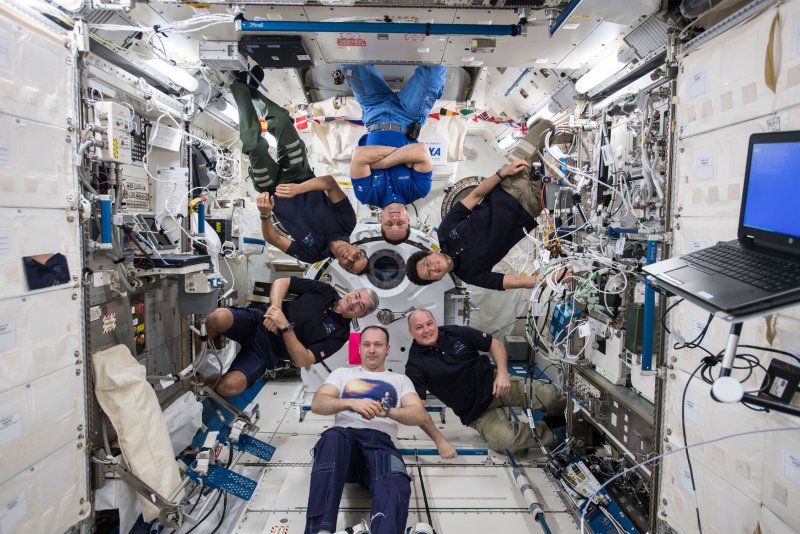Astronauts in space are exposed to microgravity and low-oxygen environments, each of which raises health concerns, researchers say. Photo by NASA/UPI |
License Photo
April 18 (UPI) -- In experiments designed to measure the impacts of spaceflight on human muscle health and performance, researchers were surprised to find inactivity had a greater negative effect than hypoxia.
Due to the microgravity environment found in space, activated muscles don't have to work as hard. Thus, muscles can grow weak and atrophy as a result of inactivity.
Microgravity has been shown to negatively affect several organs and biological systems, including bones and muscles, as well as the cardiovascular, respiratory and nervous systems.
But inactivity isn't the only threat faced by muscles in space. Astronauts are also exposed to low-oxygen environments. Oxidative metabolism, the ability of cellular mitochondria to turn oxygen into energy, is essential to muscle function.
However, when researchers simulated the effects of 21-day spaceflights on the body, they found muscle function was more impaired by inactivity than hypoxic environs.
Scientists analyzed the impact of microgravity and hypoxic environments on the knee extensor muscles of 11 active male study participants. They measured the ability of the muscles to burn sugars and fats, and also measured mitochondrial respiration using biopsy samples.
The results suggest skeletal muscles are at a greater risk of damage from inactivity than hypoxia.
"This research will help prepare astronauts for spaceflight and it improves our understanding of how muscles respond to long periods of inactivity in association with hypoxia," Bruno Grassi, a researcher at the University of Udine in Italy, said in a news release.
Because patients with cardiovascular and respiratory diseases are at risk of both inactivity and hypoxia, the study's results -- detailed in the Journal of Physiology this week -- could also have implications for relevant therapeutic and rehabilitative interventions.
"Future studies will have to investigate in more detail the mechanisms responsible for the observed findings," Grassi said. "The results obtained on skeletal muscles, moreover, will have to be interpreted in conjunction with those deriving from other studies of the PlanHab project, dealing with the cardiovascular, respiratory, immune and central nervous systems and metabolism."















